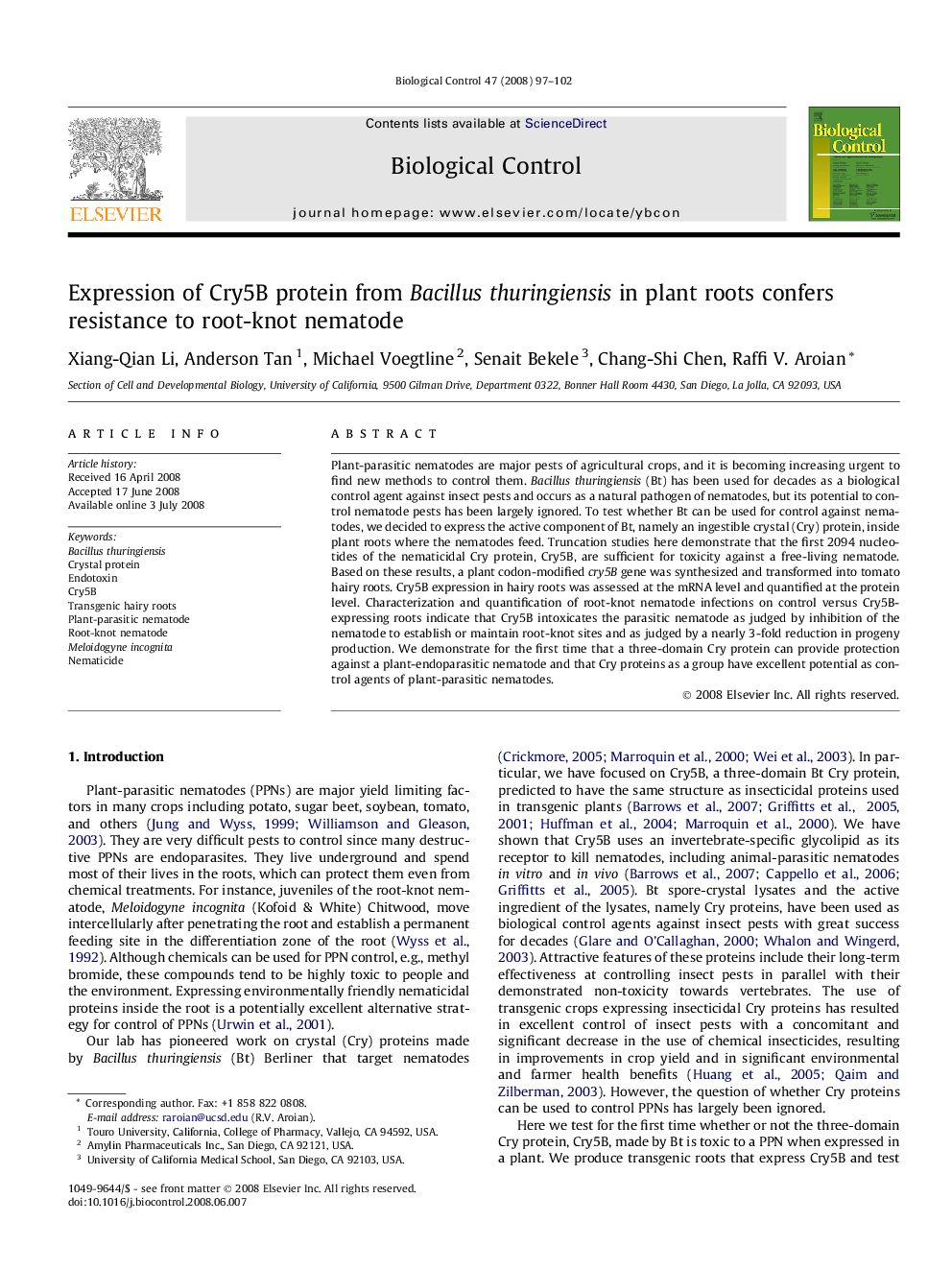| Article ID | Journal | Published Year | Pages | File Type |
|---|---|---|---|---|
| 4504777 | Biological Control | 2008 | 6 Pages |
Plant-parasitic nematodes are major pests of agricultural crops, and it is becoming increasing urgent to find new methods to control them. Bacillus thuringiensis (Bt) has been used for decades as a biological control agent against insect pests and occurs as a natural pathogen of nematodes, but its potential to control nematode pests has been largely ignored. To test whether Bt can be used for control against nematodes, we decided to express the active component of Bt, namely an ingestible crystal (Cry) protein, inside plant roots where the nematodes feed. Truncation studies here demonstrate that the first 2094 nucleotides of the nematicidal Cry protein, Cry5B, are sufficient for toxicity against a free-living nematode. Based on these results, a plant codon-modified cry5B gene was synthesized and transformed into tomato hairy roots. Cry5B expression in hairy roots was assessed at the mRNA level and quantified at the protein level. Characterization and quantification of root-knot nematode infections on control versus Cry5B-expressing roots indicate that Cry5B intoxicates the parasitic nematode as judged by inhibition of the nematode to establish or maintain root-knot sites and as judged by a nearly 3-fold reduction in progeny production. We demonstrate for the first time that a three-domain Cry protein can provide protection against a plant-endoparasitic nematode and that Cry proteins as a group have excellent potential as control agents of plant-parasitic nematodes.
